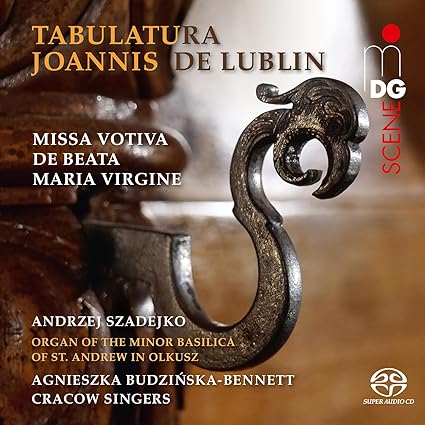

Rorate Missa votiva de Beata Maria Virgine - Kyrie - Gloria Spiritus et alme - Sequence Congaudent angelorum chori (Prosa de Assumptione) - Credo - Sanctus solemne et Benedictus - Agnus Post Missam
This new release from the MDG (Musikproduktion Dabringhaus & Grimm) label, should be of interest not only to early Renaissance music enthusiasts and organists, but could also appeal to musicologists, historians, and any musicians curious to expand their knowledge concerning the roots of music in the Western hemisphere as we know it today.
The Tablature of Jan of Lublin is one of the most important sources of European musical heritage. The manuscript from 1537-48 includes works of Dutch, French, Italian, German and Polish origins. It is a joint work of several scribes who copied into one volume various pieces used by the organist of the Krasnik monastery, Joannis de Lublin. This is (after the Vatican) the second largest collection of organ music from the 16th century. {Booklet Notes}
My understanding is that Lublin would compose and incorporate original organ pieces, based on the existing plainchant and Gregorian chant of the Mass, within the liturgical proceedings. This tablature was intended as a method for organists to study, so as to learn how to compose pieces based on plainchant and include them within the service as part of their tasks.
For this project, painstaking effort and research was used to track down and identify plainchant from 16th century Poland used by the Cracow Singers for the text of the Mass. Organist and composer Andrzej Szadejko plays the intertwining organ pieces on the Hans Hummel & Georg Nitrowski organ (1611-1630) in the Basilica Minor of St. Andrew the Apostle in Olkusz, Poland. An instrument that saw many minor repairs and upgrades over the years, and detailed renovation work as recently as 2018. Its disposition and limited stops are perfectly suited to the music at hand.
In this day and age of digital replication, instant messaging and immediately accessible online downloads, it's enlightening to realize that 500 years ago they still managed to get everything done manually with excellent results.
Jean-Yves Duperron - January 2025 Criste (eleison)Et incarnatus